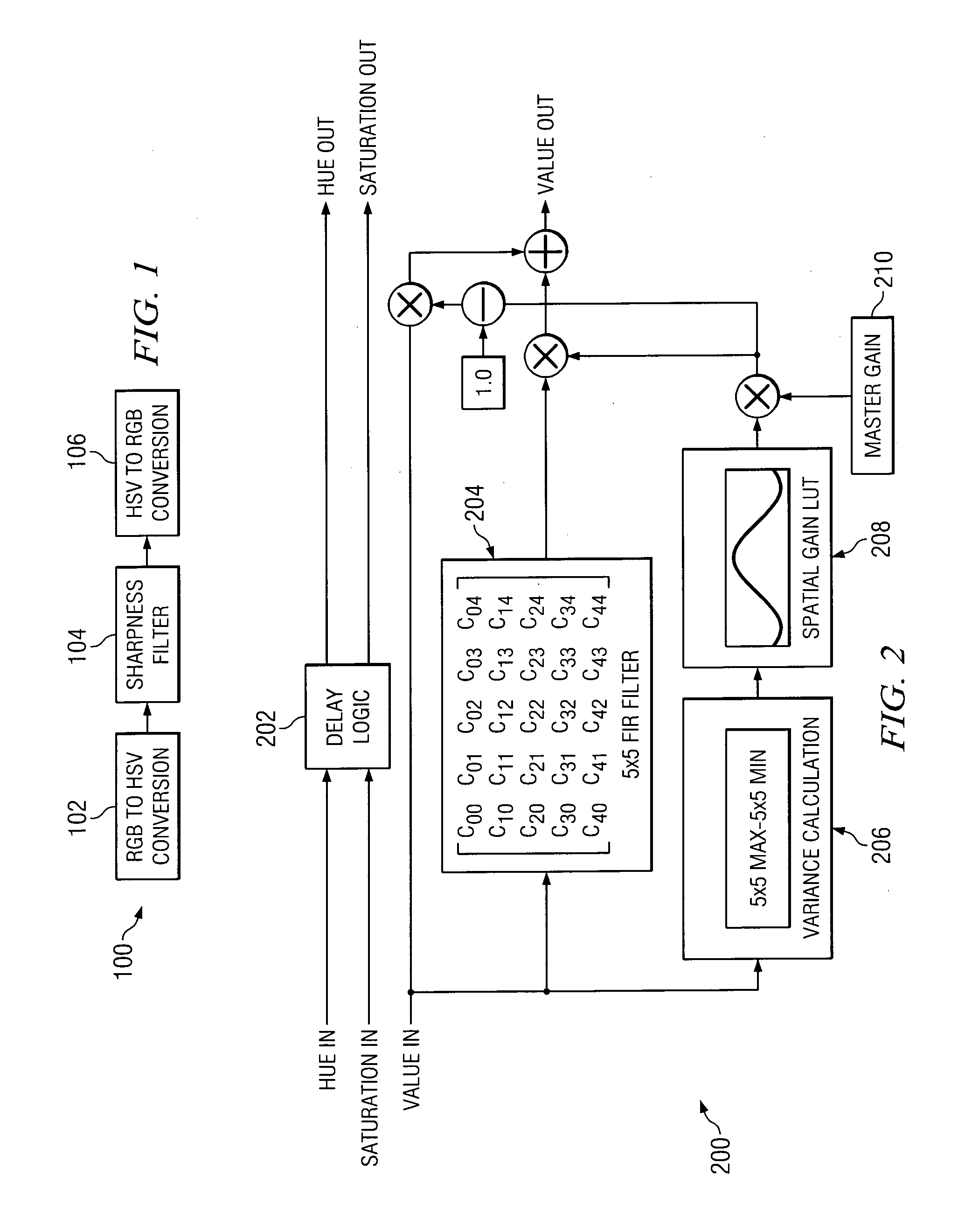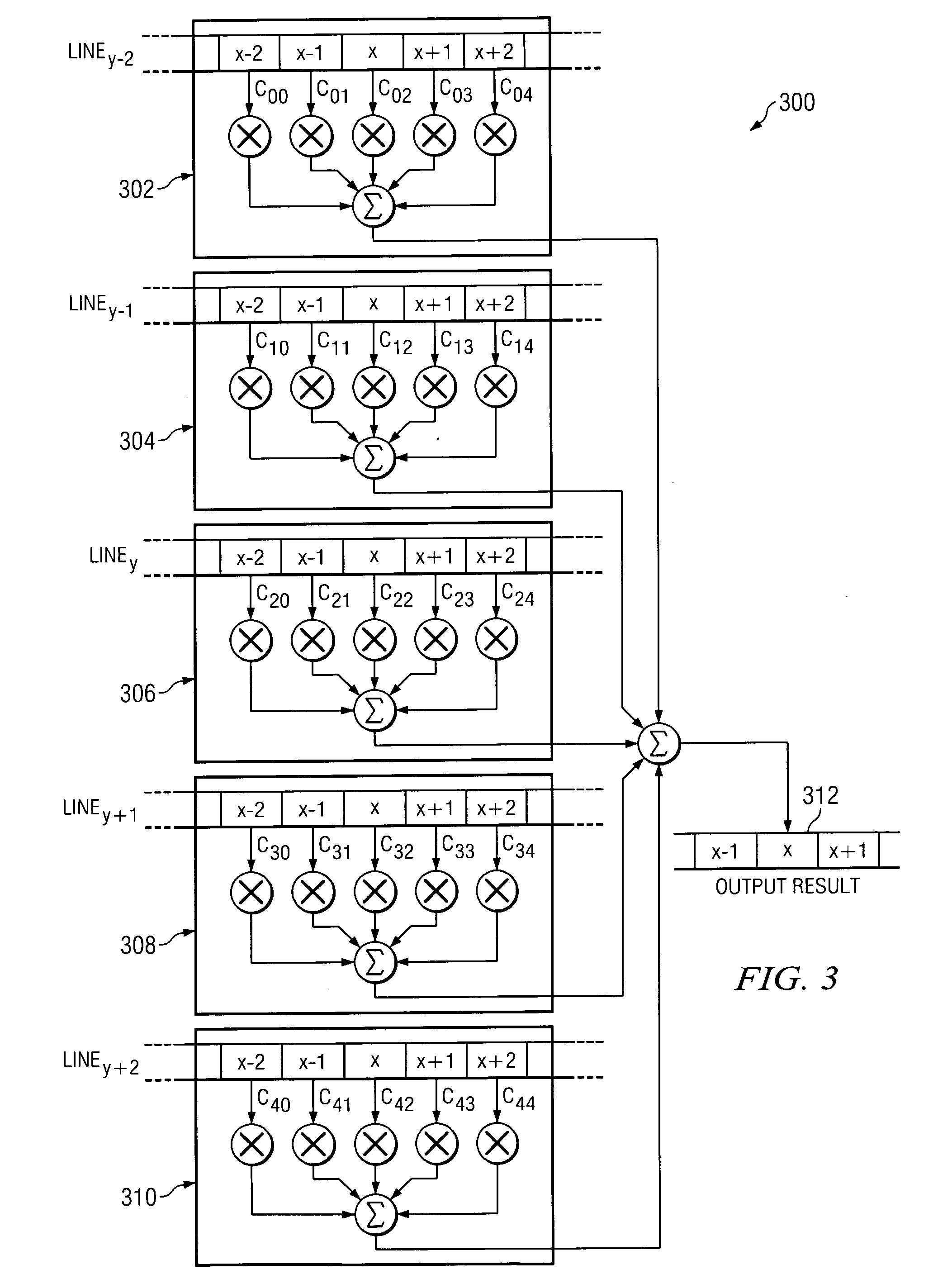System and method for sharpness filter for picture-smoothing architectures
- Summary
- Abstract
- Description
- Claims
- Application Information
AI Technical Summary
Benefits of technology
Problems solved by technology
Method used
Image
Examples
Embodiment Construction
[0010] In accordance with the teachings of the present invention, a system and method for a sharpness filter for picture-smoothing architectures are provided. Generally, the sharpness filter minimizes the blurring effect of the picture-smoothing algorithm by applying an inverse transfer function to the incoming image prior to the application of the smoothing process. Particular embodiments of the present invention may be useful in a variety of display and projection systems. In particular, some embodiments of the present invention may be useful in DMD devices employing picture-smoothing techniques such as Texas Instruments' SmoothPicture™ technology.
[0011]FIG. 1 illustrates high-level block diagram 100 of one embodiment of the sharpness enhancement system of the present invention. Generally, in one embodiment, the image enhancement of the present invention is performed in the Hue-Saturation-Value (“HSV”) color space, in which hue defines a particular color (such as red, magenta, or...
PUM
 Login to View More
Login to View More Abstract
Description
Claims
Application Information
 Login to View More
Login to View More - R&D
- Intellectual Property
- Life Sciences
- Materials
- Tech Scout
- Unparalleled Data Quality
- Higher Quality Content
- 60% Fewer Hallucinations
Browse by: Latest US Patents, China's latest patents, Technical Efficacy Thesaurus, Application Domain, Technology Topic, Popular Technical Reports.
© 2025 PatSnap. All rights reserved.Legal|Privacy policy|Modern Slavery Act Transparency Statement|Sitemap|About US| Contact US: help@patsnap.com



